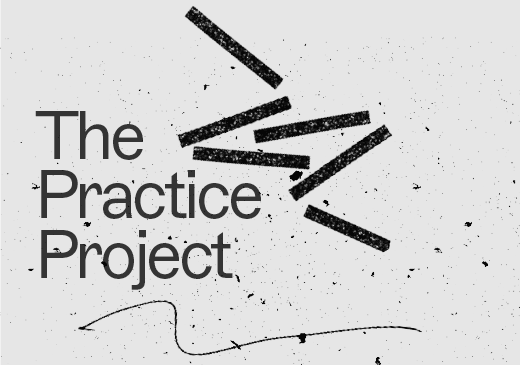Introduction
Music Performance Anxiety (MPA) is a complex and debilitating condition affecting musicians of all different standards and at various stages of their development. At its worst, it’s persistent and hard to treat, and it doesn’t only affect seasoned performers - in fact, its roots can often be traced back to the early parts of a musician’s journey.
In 2006, researchers Dianna Kenny and Margaret Osborne produced a research paper entitled: "Music Performance Anxiety: New insights from young musicians." In this blog, we consider their paper and the implications for our understanding and treatment of MPA.
Their key message is that, by identifying the symptoms of MPA as early as possible, we can take preventative measures to help mitigate the condition among students and younger musicians.
The Anatomy of MPA
MPA sits at the convergence of music, psychology, health and wellbeing. Despite recent research, this makes it a complicated condition to define, study, understand and treat. It has been tackled by contemporary researchers, but their work has been hampered - to a degree - by the difficulties of identifying MPA, and also treating it once it has been identified.
What we know for sure is that MPA can have a profound effect on musicians, and that it often develops early on in their careers. Confident younger performers can transition into anxious adolescent musicians, with a number of factors contributing to this: temperament, cognitive capacity, self-perception, parenting, technique, and the specific performance experiences of a musician (to name a few).
These factors can all contribute - to varying degrees, and in a positive or negative way - to how young musicians develop as performers. But what Kenny and Osbourne found particularly interesting was that younger sufferers of MPA tend to display many of the same characteristics as more experienced performers who also suffer from the condition.
This ended up being the impetus for Kenny and Osborne’s work; they wanted to be able to identify the onset of MPA symptoms in adolescent musicians, and to determine if adopting early preventive measures could stop the condition from developing further.
Contributing Factors
Kenny and Osborne concluded that MPA typically manifests itself due to the interplay between 3 key elements: negative thoughts, changes in autonomic arousal, and the quest for perfectionism.
Briefly taking each of these in turn:
- MPA can have a huge effect on how musicians think and feel about performing their music. Negative thinking is a hallmark of MPA, leading musicians to consistently fear negative evaluation or criticism. And they also start to anticipate the likelihood and consequences of such criticism, which then has an even greater impact on their desire and ability to perform.
- Our autonomic nervous system is the part of our central nervous system that controls our unconscious physiological processes - like our breathing and heart rate. Young musicians with MPA may well experience symptoms like an elevated heart rate or shortness of breath before, or during, a performance.
- Musical performance involves a number of skills, including fine motor abilities, concentration, memory, interpretation and expression. As a result, perfectionism is a trait that can often be caused by the pursuit of musical excellence - and it plays a significant role in MPA. Kenny and Osbourne found that definitions of anxiety and perfectionism overlap, with both involving an unwanted sense of losing control, and an excessive fear of making errors or not achieving desired outcomes.
As well as these key factors, audience size, the perceived importance of performances, and separate individual traits among performers, can also contribute to the development of MPA among younger musicians.
Early Intervention Is Key
Because the experiences of younger musicians suffering from MPA align very closely with those of adult sufferers, Kenny and Osborne strongly advocate for swift action in addressing the condition from the outset. By being proactive, and being able to recognise and address symptoms at an early stage, we can hopefully prevent the progression of MPA among music students and young performers.
So music teachers and other educators, and also parents, have a pivotal role to play. They are urged to be observant, watching for the types of attitudes and behaviours that are indicative of MPA. For example, a student may say: 'If I make the slightest mistake, they'll think I’m incompetent...' or 'the audience expects me to play at a higher standard than I can, and they’ll be disappointed in me'.
Identifying this type of attitude, and fostering a more constructive outlook, can help to prevent MPA from taking hold. For example, encouraging more realistic self-appraisal, such as “I’m bound to make a few mistakes, but so does everyone….”, can help to change a learner’s long-term approach to music practice and performance.
Conclusion
Recent advances in theorising about, and measuring, MPA in children and adolescents have increased our broader understanding of the condition, and how it develops, within younger musicians.
But our knowledge remains incomplete, and more studies are needed to understand better how the condition develops; as are more treatment-outcome studies, in order to determine how best to assist young musicians with MPA, once it has been identified.
By understanding the nature of MPA, and its early indicators, teachers and parents can make a substantial difference - by shaping the approach of young musicians to their practice and performance.
Our musical journey is not destined - or even intended - to be perfect. Above all though, it's meant to be enjoyable and fulfilling. Hopefully, we can use our existing knowledge of MPA to help create a more nurturing, and less stressful, environment for music practice and performance.
